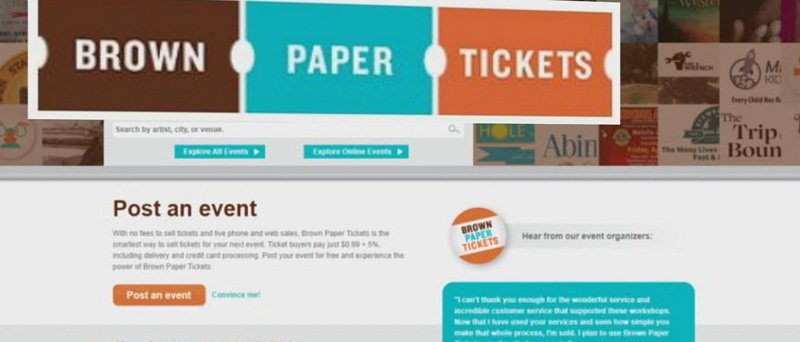Events are no longer about filling seats. They’re about filling space with ideas, conversations and meaningful moments that invite people to take part. Whether in-person or online, attendees today don’t want to simply observe, they want to contribute. The most memorable experiences are the ones where the audience feels seen, heard and included in shaping what unfolds. Platforms like Brown Paper Tickets, a ticketing service offering digital tools for seamless and participatory event planning, help lay the groundwork by streamlining logistics, and allowing organizers to focus on choices that bring attendees into the process.
This shift doesn’t require an overhaul of event planning. It begins with subtle changes in how organizers approach communication, space and scheduling. Small details can prompt meaningful involvement. With participation built into every phase of the experience, events become less like a broadcast and more like a dialogue. That shift not only strengthens the moment, but it stretches the value long after the final session ends.
Starting the Conversation Before the Event
Audience engagement doesn’t start at the door. It begins the moment someone decides to attend. Pre-event emails, digital schedules and registration questions offer early chances to open the dialogue. Instead of treating these touchpoints as administrative steps, organizers are using them to learn what people care about, and to let them know their input matters.
One common tactic is to include optional questions at registration. What are you hoping to learn? What are you most excited about? These responses can shape session content, personalize recommendations or influence breakout formats. Others use welcome emails to offer a behind-the-scenes look at planning decisions or highlight the stories of speakers and vendors. This kind of transparency makes attendees feel included from the start.
Some organizers are enhancing the attendee experience with pre-event content like short video briefings or interactive guides. These tools provide helpful context, highlighting key themes, introducing partners and offering ways to get involved. When attendees arrive informed, they’re more likely to participate fully, and with confidence.
Building Spaces That Invite Input
Participation isn’t driven by programming alone, it’s also shaped by the environment. Both physical and digital design choices play a role in whether attendees feel invited to engage or inclined to sit back. Room layouts, breakout formats and even signage can signal whether contribution is welcomed. Circular seating, small tables or flexible furniture layouts often spark more conversation than traditional rows. Likewise, informal discussion zones, collaborative note-taking stations or interactive walls for posting ideas can encourage meaningful involvement.
These kinds of setups make it easier for introverted guests to speak up and create space for connection that doesn’t feel forced. Big events don’t have to feel overwhelming either, with a few simple shifts in pacing, like adding breaks for reflection or interactive app prompts between sessions, the whole experience becomes more engaging and human.
Letting Attendees Influence What Happens Next
What happens during an event shapes memory, but what happens after determines whether that memory sticks. Organizers who close the loop, who acknowledge contributions, follow up on ideas and stay connected, are more likely to turn attendees into long-term participants. It can be as simple as including attendee quotes in post-event wrap-ups or highlighting suggestions where action was taken. Some organizers send out short thank-you messages with updates on next steps or outcomes that came directly from attendee feedback. Others invite guests into ongoing conversations through social channels, volunteer opportunities or collaborative planning for future events.
Participation also grows when attendees feel a sense of ownership. It might mean inviting them to nominate future speakers, co-create session topics or contribute content like blog posts or photo galleries. When organizers demonstrate that attendee voices matter, it builds trust and encourages others to speak up the next time. Platforms like Brown Paper Tickets support this kind of ongoing engagement by streamlining follow-up communications, offering digital ticketing tools and keeping logistics flexible. Organizers can stay in touch, without relying on printed materials or rigid systems. That flexibility matters when trying to maintain momentum across multiple touchpoints.
Designing for Different Types of Participation
Not every attendee wants to jump into a mic session or join a group activity, and that’s okay. Participation takes many forms. The most successful events recognize this and offer multiple ways to get involved. Some guests prefer quiet contributions, such as filling out surveys, posting on message boards or reflecting through art or journaling. Others thrive on live interaction. Still others contribute by supporting vendors, sharing their experience on social media or offering feedback after the event. Each of these touchpoints matters.
By designing with variety, organizers make space for all types of guests. It could include offering multiple communication channels, inviting content in different formats or creating themed zones that cater to different energies. For example, a quiet lounge with curated questions can exist alongside a high-energy workshop. Both support participation, but in ways that respect how people show up.
Participation as a Value and Not a Feature
People are more likely to return to events where they feel seen and valued. Participation isn’t about bells and whistles. It’s about being intentional with design choices, listening closely and leaving room for attendees to shape the experience. This mindset isn’t just good for engagement, but it’s good for the community. As expectations change, organizers are finding success not by adding more, but by inviting better. Fewer sessions with more room for conversation. Simpler formats that emphasize clarity. Tools that remove barriers instead of adding friction.
That’s where platforms can make a difference. By offering tools that prioritize communication, adaptability and ease of use, it helps planners stay focused on what matters most, building meaningful interactions that last beyond the moment. In an industry where attention is fleeting and loyalty is earned, designing for participation may be the most lasting investment an organizer can make. When attendees feel like contributors, events become something more. They become shared stories, and those stories are what people carry home.

